axon
Latest
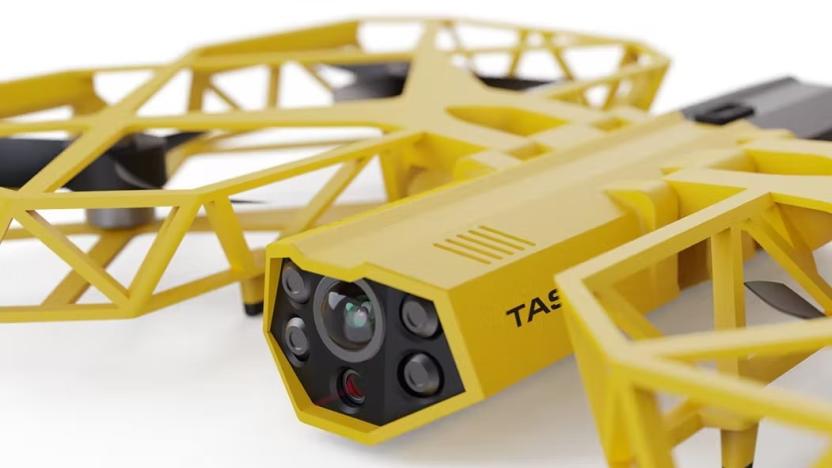
Axon halts plans to make a drone equipped with a Taser
Most members of the Taser manufacturer's ethics panel resigned over the controversial project.
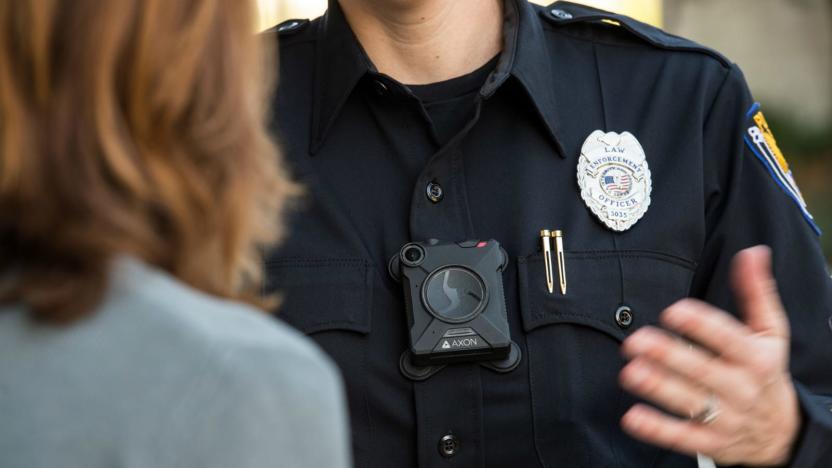
Axon won’t use facial recognition tech in its police body cameras
Axon, a major supplier of police body cameras and software, announced today that it will not include face-matching technology in its body cameras -- at least not yet. The decision follows a report from Axon's independent AI ethics board, which concluded that face recognition technology is not reliable enough to justify its use in body cameras. According to the report, there is "evidence of unequal and unreliable performance across races, ethnicities, genders and other identity groups."
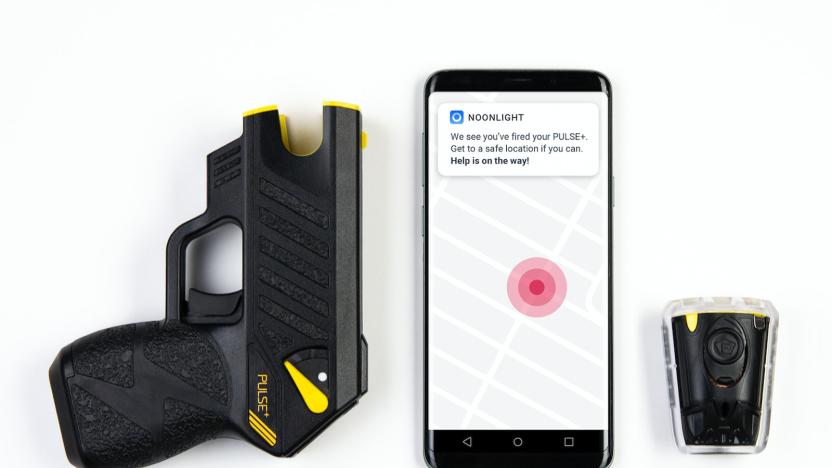
Axon's latest Taser weapon calls police when fired
If you're in a dangerous-enough situation to fire a stun gun, you probably want help as soon as possible. Axon certainly thinks so, at least -- it's launching an upgraded version of the Taser Pulse, the Pulse+, that contacts police when you fire the weapon. Load an app from Noonlight on your phone and the new Taser can dispatch authorities to your location and give you the opportunity to speak to 911 if it's safe. Axon is betting the time savings will be vital in moments when you're either still in danger or are too shaken to make a call.

NYPD pulls 2,990 body cameras after one catches fire
The NYPD's plan to outfit every officer with body cameras has run into trouble. The department has pulled about 2,990 Vievu LE-5 cameras across the city after one officer's camera caught fire near a Staten Island precinct. There's a "possible product defect" with the LE-5, the NYPD said in a statement, and it was removing existing models out of an "abundance of caution." Most of the force's 15,500 cameras (including LE-4 models) aren't affected.

When body cams had bullets
Just as GoPros have given us a whole new perspective on everything from extreme sports to animal behavior, so have body-worn cameras offered new insights into policing. Law enforcement agencies around the world now use body cams to record the activities of officers in the field, though they've only become commonplace in the last few years. But the idea of documenting the volatile situations officers can find themselves in -- providing both evidence against offenders and holding police accountable for their actions -- is much, much older. The first attempts were very different from the body cams of today, however, as releasing the shutter required pulling the trigger of the gun the camera was attached to.

Axon opens ethics board to guide its use of AI in body cameras
Axon (formerly Taser) is keenly aware of the potential for Orwellian abuses of facial recognition, and it's taking an unusual step to avoid creating that drama with its body cameras and other image recognition systems. The police- and military-focused company has created an AI ethics board that will convene twice per year (on top of regular interactions) to discuss the ramifications of upcoming products. As spokesperson Steve Tuttle explained to The Verge, this will ideally establish a set of "AI ethics principles" within police work where certain uses are off-limits.

ZTE’s dual-screen Axon M is fascinating and flawed
Six years ago, a smartphone maker without much clout in the US designed an Android device with a novel second screen that turned a thick phone into a small tablet. That company was Kyocera, that device was the Echo, and uh, it totally flopped. (David Blaine doing magic tricks under 10,000 gallons of water at the phone's unveiling was, in hindsight, not a great omen.) Rather than leave the idea of a dual-screen phone in the dustbin, ZTE ran with it and last month released the Axon M, an AT&T exclusive. It's hard not to look at the thing as a $725 curiosity, but don't be fooled: It's a lot more than that. It's an argument that smartphones can and should be more than the flat slabs we've grown so used to. Too bad that argument isn't compelling.
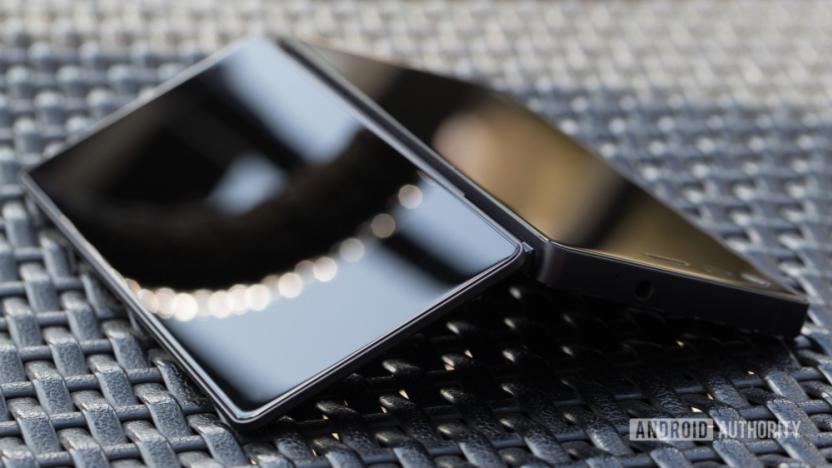
ZTE may unveil a dual-screen folding phone in October
Weeks ago, sources told Venturebeat's Evan Blass that ZTE and AT&T had teamed up to release a dual-screen, unfoldable smartphone codenamed the Axon Multy. Today, Android Authority followed up with leaked screenshots of a similarly-designed phone, which sources claimed might be called the Axon M. Regardless, both sets of details imply that this is the device ZTE will announce at an anticipated press conference in NYC on October 17th.

Axon hopes you'll submit smartphone video as evidence
In theory, handing your smartphone video over to the police if you have evidence of a crime is the right thing to do -- it provides accountability and could be the key to a conviction. However, those contributions are about to enter a gray area. Axon (the brand formerly known as Taser) has confirmed that it's working on a "Public Evidence Product" that would let you submit photos and videos to Evidence.com, its cloud platform normally used for police footage. That doesn't sound so bad on the surface, but the handling and potential motivations are raising concerns that this amounts to excessive privatization of the justice system.
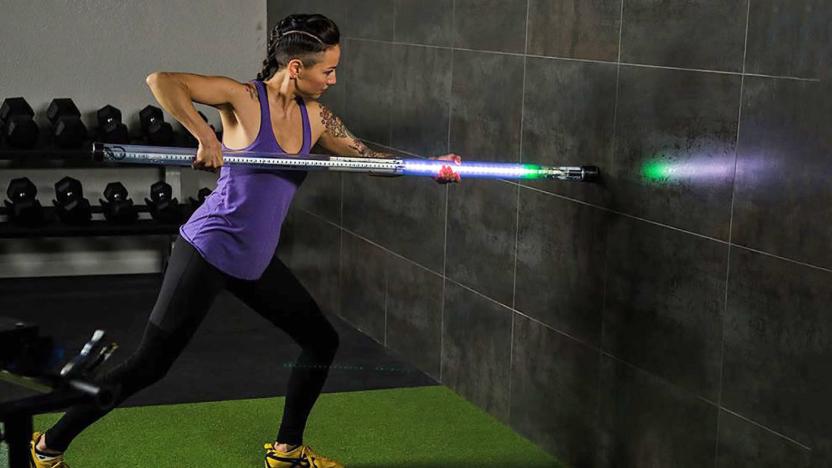
Exercise stick trains your muscles with light-based feedback
Of all the products ripe for technological gimmicks, training gizmos take the (low-fat, sugar-free) cake. That said, a new gadget called Axon does look pretty cool, if you're willing to risk Kickstarter. It's a stick that resembles a stout pool cue, with sensors and lights that measure the force you apply when pushing it against a wall, floor, ceiling, rock or tree. You can then train your body to match the lights, helping you improve muscle and back strength.

Sensor turns on a cop's body camera when their gun is pulled
Years after high-profile police shootings pressured departments across the country to adopt body cameras, results have been mixed. The increased accountability expected from their rollout has been marred with technical malfunctions or absent footage when officers fail to turn on their devices. Stun gun maker TASER wants to change this with a simple sensor that automatically turns on body cameras when an officer's gun leaves its holster.

Taser bought two computer vision AI companies
Law enforcement agencies across the country are adopting body-worn cameras as a means both of increasing their transparency with the public and generating actionable feedback to improve officer performance. Problem is, all these body cams produce terabytes of data daily, far more than many departments can effectively handle. That's why Taser (yes those guys, they make body cameras too) announced on Thursday that it has acquired a pair of companies that specialize in computer- and machine-vision to create the "Axon AI" group. Together, they'll develop a platform that can efficiently parse this flood of data in real time.

ZTE's Axon 7 Mini smartphone is yours for $300
As promised, ZTE is launching the Axon 7 Mini in the US... and it might just hit the sweet spot if you're more interested in price than raw performance. The 5.2-inch Android phone ("mini" is clearly a relative term) is now available for pre-order at just under $300, or a full hundred bucks less than the full-size Axon 7. The first orders should ship around October 27th. To recap, you're still getting the Axon 7's stereo speakers (with Dolby Atmos support), dual SIM slots and an 8-megapixel front camera. The cost-cutting mainly comes through the 1080p screen, a modest Snapdragon 617 processor, a less-crisp 16MP camera, and reductions to both memory (3GB) and storage (32GB) -- it's really a mid-tier phone with some premium perks.

ZTE Axon review: a powerhouse that punches above its weight
A few weeks ago, I got a look at a curious kind of mobile marketing head-fake: A new company called "Axon" no one had ever heard of promised the moon and stars in the form of a shiny, seemingly impressive $450 smartphone. As it turned out, Axon wasn't an upstart smartphone maker taking on stodgy giants -- it was a sub-brand of Chinese OEM ZTE trying to make something cooler than it's normally known for. The ruse worked in that it got a bunch of jaded nerd journalists to an event in the middle of Manhattan in the rain, but is the phone itself actually worth that trouble? Did ZTE finally figure out how to make a phone that wary US consumers might flock to? The answer might surprise you.

ZTE thinks its Axon is the unlocked flagship America deserves
"It's designed in the US, for the US." That's not the sort of bluster you'd normally hear from Lixin Cheng, CEO of ZTE's American division, but he proffered it several times during a pre-show pow-wow to make sure it stuck. Not long after that, Cheng and his team pulled back the curtain on the $450 Axon -- a phone that really, really doesn't feel like the company's usual fare. It's all metal, runs a deliciously near-stock version of Android 5.1.1 and packs one of Qualcomm's updated Snapdragon 810 processors with 4GB of RAM for good measure. Make no mistake: The Axon is a full-on flagship from a company that hasn't always had the best luck making them.

Taser's on-officer cameras catch you in the act, right to remain silent imperative
Taser International has released an update to its on-officer system, the AXON Flex. The new rig provides law enforcement officials with body-mounted cameras that capture video evidence "from the officer's perspective." These recording devices can be affixed to the hat, collar, shoulder or on specially designed Oakley shades and are ruggedized to IPX2 standards. That's all well and good, but what really gives this setup nerd-cred is what can be done with the captured video. Through a partnership with evidence.com, the Flex system can send footage to a "military grade" cloud-based storage system for safe keeping; there is also an on-site storage option for IT-savvy forces. As if that weren't enough, Taser and Looxcie have co-developed a smartphone app -- available for iOS or Android -- that will allow officers to review captured clips and add GPS coordinates, notes or timestamps. The system's goal is to protect officers from "false claims, enhance public trust [and] decrease litigation." AXON Flex is set to be released in Q1 and will have a base price of around $700. Don't tase film me, bro.

IBM's cognitive computing chip functions like a human brain, heralds our demise (video)
After having created a supercomputer capable of hanging with Jeopardy's finest, IBM has now taken another step toward human-like artificial intelligence, with an experimental chip designed to function like a real brain. Developed as part of a DARPA project called SyNAPSE (Systems of Neuromorphic Adaptive Plastic Scalable Electronics), IBM's so-called "neurosynaptic computing chip" features a silicon core capable of digitally replicating the brain's neurons, synapses and axons. To achieve this, researchers took a dramatic departure from the conventional von Neumann computer architecture, which links internal memory and a processor with a single data channel. This structure allows for data to be transmitted at high, but limited rates, and isn't especially power efficient -- especially for more sophisticated, scaled-up systems. Instead, IBM integrated memory directly within its processors, wedding hardware with software in a design that more closely resembles the brain's cognitive structure. This severely limits data transfer speeds, but allows the system to execute multiple processes in parallel (much like humans do), while minimizing power usage. IBM's two prototypes have already demonstrated the ability to navigate, recognize patterns and classify objects, though the long-term goal is to create a smaller, low-power chip that can analyze more complex data and, yes, learn. Scurry past the break for some videos from IBM's researchers, along with the full press release.

Axon Logic's Haptic tablet can run a desktop's OS, has a desktop's price
Half a year ago, you'd have been forgiven for expecting that today both Windows 7 and Mac OS X would have flagship tablets representing them, in the shape of the HP Slate and the Apple iPad. Alas, one of those devices ran away to enterprise land and the other opted for a mobile OS. It's against this backdrop of disappointment that Axon's Haptic tablet enters, with confirmation that its Atom-based innards are fully compatible with Linux, Windows and Mac operating environments. With a 10.1-inch resistive touchscreen, 320GB HDD, 2GB of RAM, and a trio of USB ports, it's another of those devices you could classify as a keyboard-less netbook, but at least its OS versatility will give it a leg up. Then again, with a pre-order price of $750 and no bundled OS licenses, we suspect it might need a little more than that to succeed where so many have failed.

Dolby issues Axon SDK to bring surround sound to online console / Mac gamers
Dolby's Axon surround sound technology isn't exactly new (it's already used on a number of PC titles), but to date, it has yet to make a stand in the online console and Mac gaming sectors. All that changes today at GDC, with the aural company introducing an Axon software development kit that will make it possible for Xbox 360, PlayStation 3 and OS X titles to integrate the technology. According to the company, this here solution provides improved audio chain processing (noise suppression and echo suppression), surround sound voice chat over stereo headsets, 5.1 playback and support for any stereo headset. We're told that the ports should be available for devs starting in April, though only time will tell how long it takes for your Xbox Live experience to go from haunting to all-encompassing.

Axon head-mounted camera records what police see when they keep an eye on Mayberry
Taser International, not content with zapping people with electricity, now wants you to be able to capture the action on video -- hands-free. Similar to the helmet cam used on television sports, the Axon system includes a Linux-powered tablet PC, an eye-level HeadCam that records audio and video (using IR in low-light), and a corresponding account on Evidence.com, an online, real time app for accessing and analyzing the data -- sure to become law enforcement's third favorite web portal (after Sprint's GPS data dispersal site and Garfield Minus Garfield). The system -- which will cost $5,700 per officer every three years -- made news recently when a Fort Smith, Arkansas officer was cleared of any wrongdoing in the death of a man who had threatened his wife with a handgun. The policeman was wearing an Axon camera at the time, which the county prosecutor said that the video allowed him to "observe what happened with complete objectivity." Currently officers in San Jose are using the system as part of a free trial, with other departments around the country expected to get in on the action in the near future. And who knows? At the very least we can hope that some hilarious law enforcement hijinks finds its way to YouTube. Get a closer look in the gallery below. %Gallery-81149%










